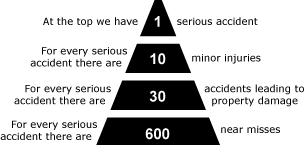Retaliation claims have increased dramatically in the last two years, creating the most significant legal risk to employers today, employment law expert Joseph Beachboard told those attending the Society for Human Resource Management’s Employment Law & Legislative Conference in Washington, D.C., on March 5, 2012.
In 2010, retaliation claims for the first time surpassed race discrimination as the most common type of charge filed with the U.S. Equal Employment Opportunity Commission (EEOC). Last year, the trend continued with 37,334 retaliation complaints filed, constituting 37 percent of the 99,947 federal workplace discrimination charges filed.
“Why are we seeing this sudden explosion in retaliation-related discrimination? First of all, retaliation is relatively easy to establish,” especially when compared to the burden of proof in race and sex discrimination cases, said Beachboard, who is a shareholder with Ogletree Deakins in Torrance, Calif.
In addition, jurors tend to look more closely at the evidence in sex and race discrimination cases, but can relate easier to the allegation of retaliation, Beachboard said. They reflect a societal rage often summarized on bumper stickers: “Don’t get mad. Get even!”
Finally, retaliation claims have skyrocketed since the 2006 Supreme Court ruling in Burlington Northern v. White, which lowered the standard of proof and made it easier for employees to prove their claims.
In 2009, the Supreme Court unanimously ruled that employees don’t have to file a formal complaint to win a retaliation claim, expanding the number of plaintiffs who can file. In Crawford v. Metropolitan Government of Nashville and Davidson County, Tenn., the justices found in favor of a woman who corroborated charges filed by someone else in a sexual harassment case and was subsequently fired.
In Thompson v. North American Stainless, the nation’s high court in January 2011 ruled unanimously that a worker who claimed he was fired because his fiancée had filed a sex discrimination claim against their mutual employer had a cause for filing a retaliation claim. The worker was fired three weeks after the EEOC notified the employer the fianceé had filed a charge of discrimination.
“Things have changed with respect to how we look at these types of claims,” Beachboard said. “Previously, our focus was on the individual and their own protected activity. … Now, it’s different. The focus is not only on the individual’s own protected activity, but also any protected activity of anybody he or she is associated with—whatever that means.”
In March 2011, the court ruled that employees who make verbal complaints also may sue for retaliation. In Kasten v. Saint-Gobain Performance Plastics Corp., the justices decided in favor of an employee who contended he was fired after complaining to his supervisor about the distance between time clocks and the spot where he had to don protective gear, claiming he wasn’t being paid for time worked in violation of the Fair Labor Standards Act.
As a result, HR professionals should make sure they treat verbal complaints as seriously as written complaints and should keep a close eye on employees who have complaints to ensure they aren’t retaliated against, Beachboard said.
Dori Meinert is a senior writer for HR Magazine.
via Retaliation Claims Are Greatest Legal Risk.

